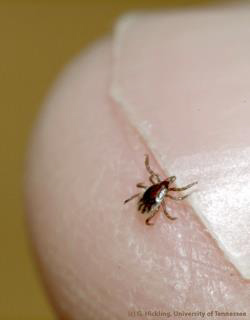Joseph R. Anticaglia MD
Medical Advisory Board
At the end of the summer last year, a friend of mine rang my doorbell at 4:45 p. m. Smiling, he presented me with the last vegetable harvest of the summer from his garden.
“I’ve got peppers, eggplant, tasty cherry tomatoes and zucchini. They’ll all delicious and I picked them just a few hours ago. I like to sautee the eggplant and zucchini” — still talking as I invited him inside.
“That’s great.” I took the bundle of veggies from him as he settled down in the living room. “I see you’ve lost a few pounds. You look fine. What’s going on?” I hadn’t seen him in a few months and in a blink of an eye he said,
“You’re not going to believe this. About 6 weeks ago I thought I had the flu. I had a low grade temperature, my muscles and joints ached. I had chills, no appetite and I felt like a half a sack of flour. But the worst part was that I couldn’t walk. The aches and pain in the back of my legs and calves were horrendous.”
“When I saw my doctor, after examining me, she took 6 vials of blood from me. I asked, Why all the blood?”
“There are many things that can cause this problem. I need to rule out bacteria, parasites and so on.”
When I returned for a follow-up visit she said, “You have a disease called Babesiosis. The tests indicate that you’re infected by a tick call Babesia.”
“What in the world is Babesia? Well, after my conversation with her and doing a lot of research, I learned about Babesia.”
“Tell me more.”

Source: G. Hickling, University of Tennessee.
“Babesia is a tick, a parasite that infects the red blood cells. The disease happens most often during the warm, summer especially along the coast in the Northeast. Let me tell you, I googled this sucker and read all about it. I don’t want to bore you.”
“Please go on. You said you thought it was the flu.”
“Right. I had a fever, was sweating and had muscle aches and pain. Most people, in fact, have no symptoms after being bitten. But I couldn’t walk! My doctor peppered me with questions about the spleen. Did I have surgery to have it removed? Was it enlarged?”
“What’s with the spleen?” I asked him.
“People who have had their spleen removed, the elderly and those with a weak immune system can have more severe symptoms. But younger people can get this disease without previous problems.” "Did you notice a tick bite on the skin? Could it have been Lyme’s disease?
"It wasn’t Lyme disease and I didn’t notice a bite on my skin from these blood sucking ticks. The ticks are about the size of a poppy seed and fall off in about three days. I, like a bunch of other people, didn’t realize I had been bitten by this infected blacklegged deer tick.
He went on, “Let me throw a few stats at you: There are about 300,000 cases of Lyme disease a year in the United States and 4 out 10 of these individuals may have a co-infection with Babesia. That means up to 120,000 people with Lyme disease have Babesia. This combination can make both diseases worse by making it last longer and becoming more severe.”
“You sound like an infectious disease specialist.”
"Thanks, but hang on: Babesia can cause atrial fibrillation, severe anemia and breathing problems. Also, blood banks screen for this disease. Surprise — it’s the most common transfusion-related infection.
“You seem fine today. What did the doctor do for you?”
“She put me on two antibiotics and one was a sulfur drug. I feel great now.”
After a rambling conversation about family, sports, music and politics I said, “Thanks for the vegetables and the information about Babesia.”
“You’re more than welcome.”
Most of the time people experience flu-like symptoms from a tick-borne infection. A rash may or may not accompany the infection. Wear long sleeves and pants, shoes and socks to prevent ticks from reaching you r skin.
To remove the tick, use tweezers, grasp the tick as close to the skin as you can. Pull upward with a steady, smoothed motion. Clean the area with alcohol. Place the tick in a plastic bag. Bring it with you to the doctor’s office if you develop symptoms. It’s important to know about tick habitats, how to prevent tick bites and what to do if you get bitten.
References
- Center for Disease Control and Prevention; Babesiosis; May 24, 2018
- Diuk-Wasser MA, Vannier E, Krause PJ. Coinfection by Ixodes Tick-Borne Pathogens: Ecological, Epidemiological, and Clinical Consequences. Trends Parasitol, (2015).
- American Lyme Disease Foundation, Babesiosis
This article is intended solely as a learning experience. Please consult your physician for diagnostic and treatment options.

